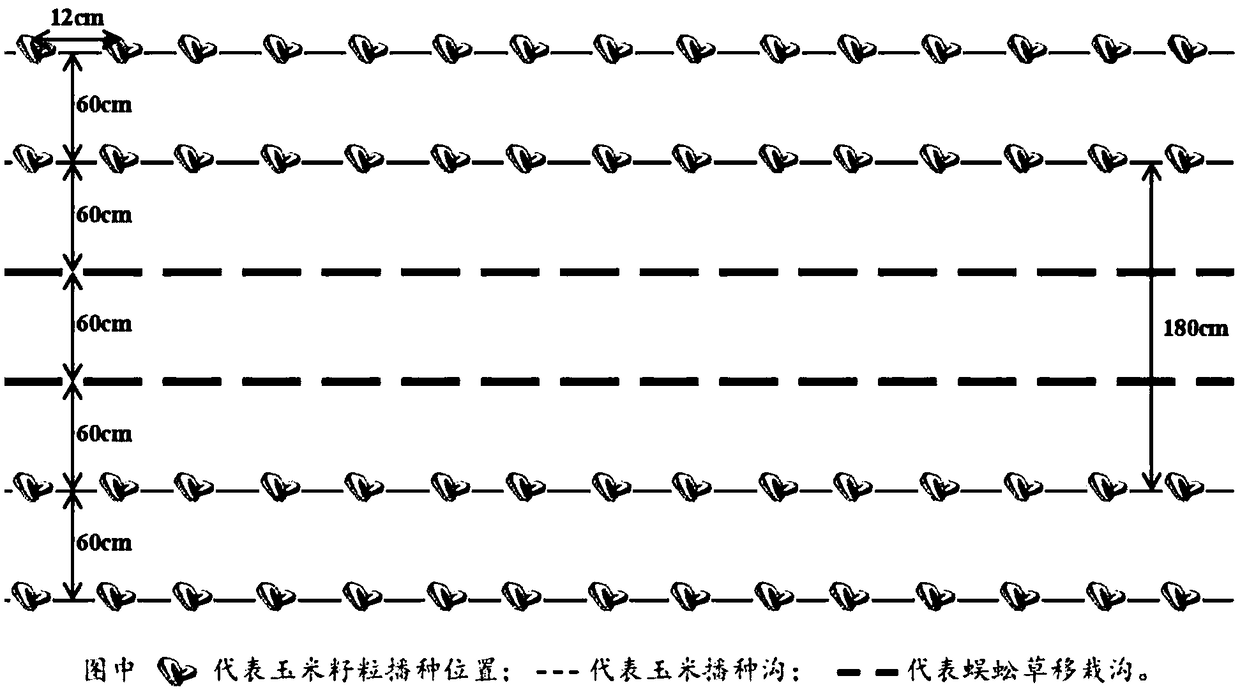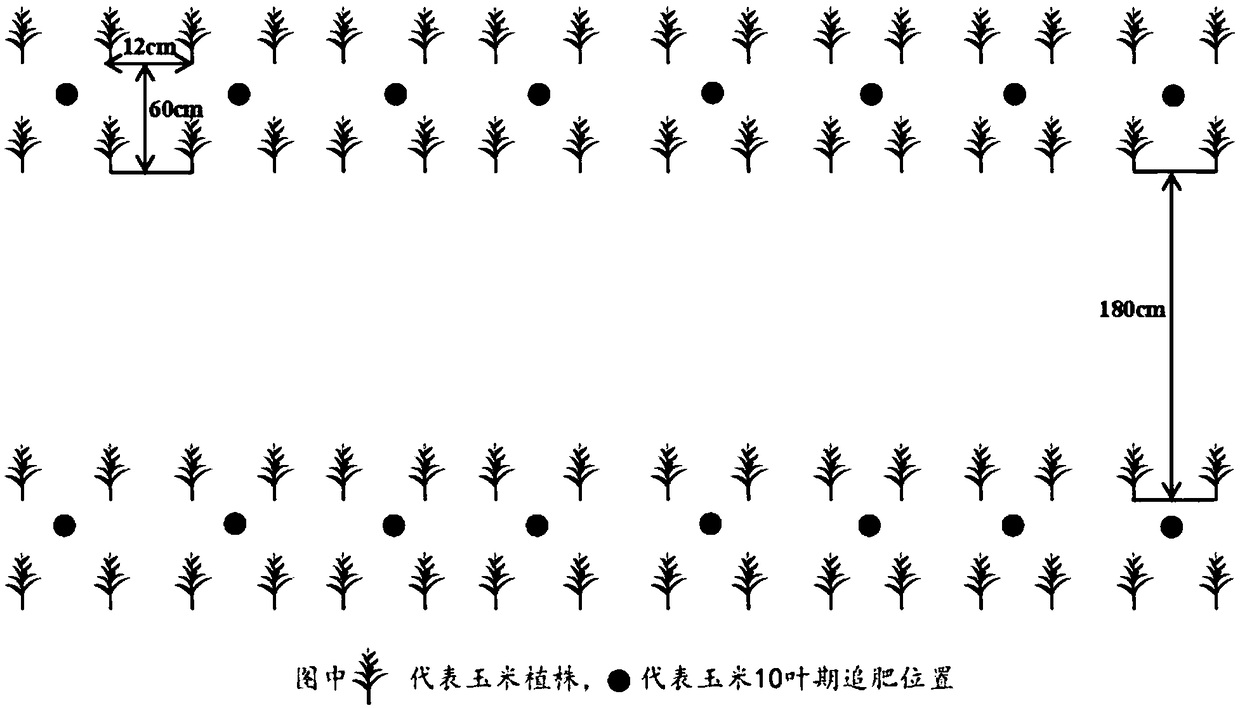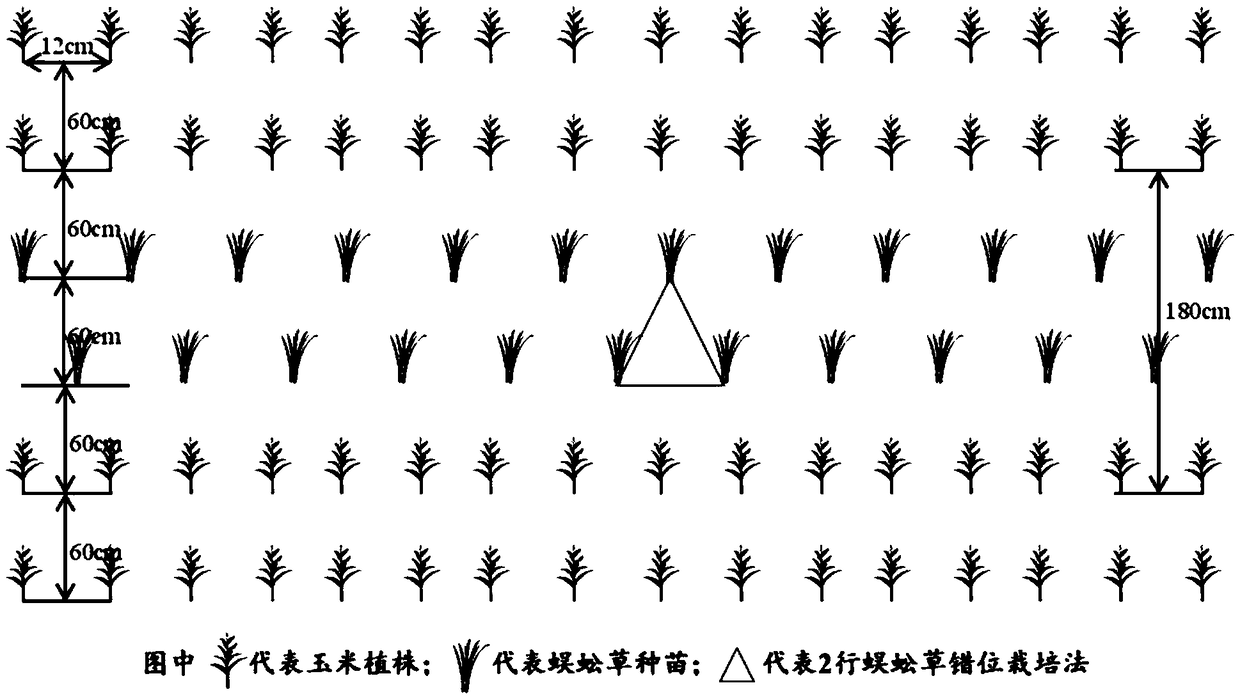Cultivation method for intercropping ciliate desert-grass and corn through recycling
A cultivation method, the technology of centipede grass, is applied in the field of agronomy to control farmland soil pollution. It can solve the problems of long elimination cycle of heavy metals, long time spent on plants, and damage to soil structure, etc., so as to enhance individual quality of plants, improve fertilizer use efficiency, and improve soil quality. The effect of high water content
- Summary
- Abstract
- Description
- Claims
- Application Information
AI Technical Summary
Problems solved by technology
Method used
Image
Examples
Embodiment 1
[0031] A kind of cultivation method that recycles centipede grass interplanting corn, comprises the following steps:
[0032] (1) Deep loosening of the soil and furrowing and applying corn-based fertilizer: Select a piece of arable land heavily polluted by heavy metal arsenic around the Yunnan mining area, and mechanically prepare the polluted arable land during the handover period between the dry season and the rainy season from late April to early May. Use a plow with a subsoiling shovel to subsoil and plow the soil. The depth of subsoiling is 40cm. After subsoiling and plowing, use a rotary tiller to plow the soil. The diameter of the largest soil clod should be less than 3cm, so that the field can be flat and finely crushed. After the soil is rotary tilled, ditches are made around the field, with a depth of 40 cm and a width of 30 cm, which is convenient for field drainage during the rainy season to prevent waterlogging. In mid-to-late May, when the weather is fine and th...
Embodiment 2
[0040] A kind of cultivation method that recycles centipede grass interplanting corn, comprises the following steps:
[0041] (1) Deep loosening of the soil and furrowing and applying corn-based fertilizer: Select a piece of arable land that is seriously polluted by heavy metal arsenic around the Yunnan mining area, and carry out mechanical land preparation during the handover period between the dry season and the rainy season from late April to early May. The plow with the loose shovel performs deep loosening and plowing on the soil. The depth of subsoiling is 45cm, and the depth of plowing is 35cm. The diameter of the largest soil block on the top is less than 3cm, so that the field can be flat and finely divided. After the soil is rotary tilled, ditches are made around the field, with a depth of 45 cm and a width of 30 cm, which is convenient for field drainage during the rainy season to prevent waterlogging. In mid-to-late May, when the weather is fine and the soil is dry...
Embodiment 3
[0049] A kind of cultivation method that recycles centipede grass interplanting corn, comprises the following steps:
[0050] (1) Deep loosening of the soil and furrowing and applying corn-based fertilizer: Select a piece of arable land heavily polluted by heavy metal arsenic around the Yunnan mining area, and mechanically prepare the polluted arable land during the handover period between the dry season and the rainy season from late April to early May. Use a plow with a subsoiling shovel to carry out subsoiling and plowing to the soil. The depth of subsoiling is 50cm, and the plowing depth is 35cm. The diameter of the largest soil clod on the land after rotary tillage is less than 3cm, so that the field can be flat and finely divided. After the soil is rotary tilled, a ditch is opened around the field, with a depth of 50 cm and a width of 30 cm, which is convenient for field drainage during the rainy season to prevent waterlogging. In the middle and late May, when the weath...
PUM
 Login to View More
Login to View More Abstract
Description
Claims
Application Information
 Login to View More
Login to View More - R&D
- Intellectual Property
- Life Sciences
- Materials
- Tech Scout
- Unparalleled Data Quality
- Higher Quality Content
- 60% Fewer Hallucinations
Browse by: Latest US Patents, China's latest patents, Technical Efficacy Thesaurus, Application Domain, Technology Topic, Popular Technical Reports.
© 2025 PatSnap. All rights reserved.Legal|Privacy policy|Modern Slavery Act Transparency Statement|Sitemap|About US| Contact US: help@patsnap.com



